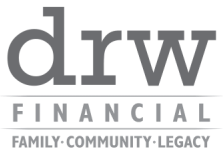|
7/10/2013 Planning By Default?The Danger of the Sneaky, Sticky Status QuoMy father earned the Eagle Scout designation as a young man, and his influence on my own development included many values he picked up through scouting. One example came in the form of a saying he used often: "failing to plan is like planning to fail". In my work I often encounter people who seem to have opted into the "default" financial plan for their situation, meaning they haven't made much conscious consideration of their own circumstance, but were instead just carried along by the currents of their lives. In cases of young professionals, the default plan may look like focusing on career development and contributing a "reasonable" amount to their 401k plan at work. (Typical exchange: Q. Why did you pick a 6% amount to contribute to your plan? A. My HR guy said that's what many of my colleagues were doing) For some older people, a common occurrence has them realizing in their mid to late career years that they are "behind" on savings and investment planning as retirement begins to look less like a far off dream and more like a coming reality - ready or not! Everyone chooses a plan, even if that plan is to do nothing and "hope for the best"One real value of working with a planning professional is in following a formal process of discovering your specific goals, articulating those goals clearly, and putting actual numbers on paper to allow for making a plan. For people who prefer to do (or at least begin) this work on their own, consider the following a "bare minimum" for avoiding the trap of the status quo.
These three items are very reduced, highly simplified approach to making a financial plan for your own life. For a plan to be effective, it may be very valuable to take a much more comprehensive approach, considering a wide array of possibilities, potential outcomes, and an intentional ranking of priorities. Comments are closed.
|
AuthorDavid R Wattenbarger, president of DRW Financial Archives
June 2022
Categories |

 RSS Feed
RSS Feed
